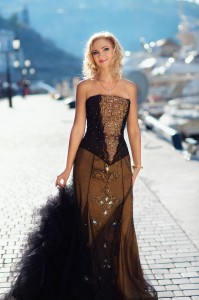
Image:© VolkOFF-ZS-BP/ Fotolia
Even though we live in the age of information technology it still happens occasionally, especially among the young and inexperienced, to be confused when it comes to what exactly a certain dress code allows. This is why we have decided to use this series of articles to acquaint you with the different dress codes and their practical meaning.
Black tie
If the invitation for an event you are planning to attend asks for a black tie dress code that means that you will have to put some serious thought into what you will be wearing. This dress code is used for balls, galas and any formal occasion. Men are required to wear a tuxedo.
The tux was first invented as smoking-room attire, its smooth cuffs allowing the ash of cigars to fall directly onto the carpet. Today, the tux is standard male evening wear. You can wear it with a black bow-tie and a sash corresponding in color. The trousers have no cuffs and no belt loops and can be supported by suspenders, which must be hidden under a waistcoat. In less formal settings a belt can be used.
The shirt under the tux must be snow-white, either plain or pleated, with a wing collar. The bow-tie is black silk and corresponding in color and material to the jacket lapel. The shoes are black classic with ties. They should not be polished. Polished shoes are worn only in white tie occasions. The socks are definitely black, knee-high and made of fine fabric.
In less formal occasions the tux can be substituted for a classic dark suit, white shirt and a dark tie. In this case, the shoes, socks and belt must be black.
The black tie dress code allows much more freedom for ladies. Their gown can be anywhere from floor-length to knee-length, but not shorter. If the invitation is for a ball or an event which includes dancing, then the gown must be long and cover 2/3 of the heel. A small purse and formal shoes are a must, but the high heel, though recommended, may be omitted.











Leave a Comment